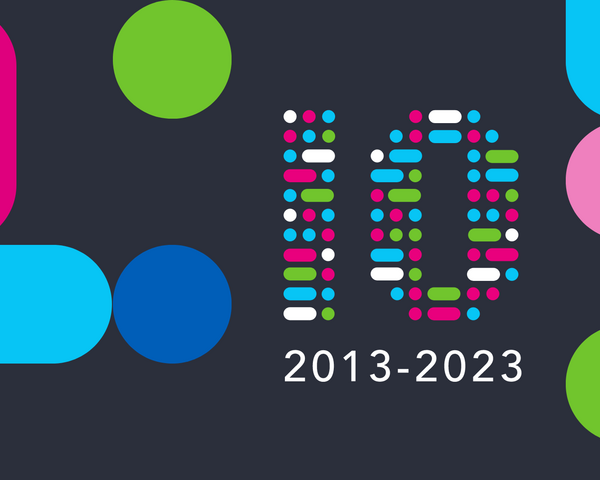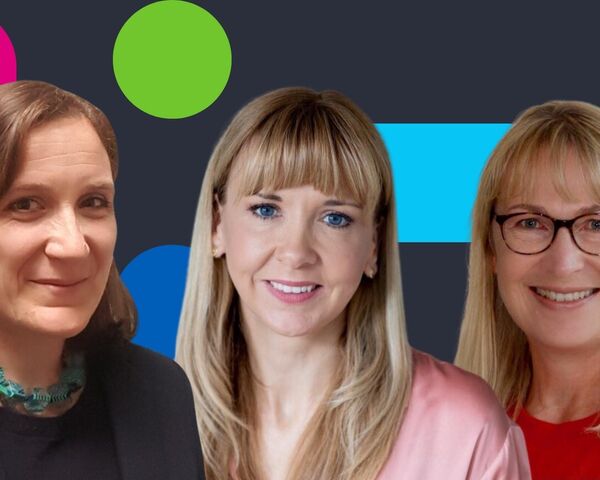The next genomics decade
By Chris Wigley on
This year marks 10 years since the founding of Genomics England in 2013 as part of the Olympic legacy – a highly ambitious “moonshot” science project.
So far, our series of posts from expert members of the team have covered everything from how the 100,000 Genomes Project changed genomic healthcare, to the amazing advances in gene discovery and enabling technologies (such as cloud, digital, imaging, and machine learning) over the past decade.
In my last blog, I shared my top 10 highlights from the past 10 years of Genomics England.
In this final post, I’d like to share some of my hopes and dreams for the future of Genomics England, the patients and participants we serve, and the wider genomics landscape.
We’ve come so far in 10 years, and I believe the next 10 years will be even more transformative.
A vision for Genomics England
As we move into the next decade, we’ll continue to work towards a future where genomics insights become truly integrated into healthcare, empowering clinicians to provide more personalised care to patients.
At the same time through our research community, we hope to continue to facilitate groundbreaking research that allows for the development of new drugs and therapies.
Above all, we’ll do this with and for the patients and participants we serve.
Scaling that “infinity loop” – where our clinical service generates the data that drives research, and the insights from research drive the transformation of healthcare – is going to be a lifelong mission, and one that fundamentally transforms how patients are diagnosed and treated, both now and in years to come.
And, just as the original 100,000 Genomes Project was an ambitious moonshot, we’re still shooting for the stars as we look ahead to the next 10 years. Let’s look at some of the ways we’re doing that.
The Generation Study delivered by our Newborn Genomes Programme – 100,000 newborns
This remarkable research study, in partnership with the NHS and delivered by our Newborn Genomes Programme, will look at how effective whole genome sequencing could be in finding and treating rare genetic conditions in newborn babies.
From 9 conditions tested in the “heel prick” test today, we’ll look at over 200 genetically-driven, treatable conditions that affect young children, and for those who have a genetic glitch, make sure they are immediately on the right treatment pathway to get the best possible outcome. On a national scale, this can help thousands of children each year.
In 10 years’ time, we could be in a position where parents are routinely offered the option to have their babies’ whole genomes sequenced at birth.
As ever, we’ll get there step by step – starting by building our understanding of how sequencing babies could affect the future of treatment and research with newborns – with ethics and consent at the heart of what we do.
Our understanding of cancer and cancer treatment
We can already see incredible progress in cancer genomics and early detection of cancer.
For example, polygenic risk scores provide huge potential to improve how we can predict if someone might get cancer. Based on genetic variants throughout the genome, analysed at birth, it could mean that therapies and lifestyle changes can be better targeted (i.e. if a patient has a high risk for colorectal cancer, screening could start in their 20s rather than their 50s).
Another example is the GRAIL Galleri trial in the NHS. It’s using the Galleri blood test – which detects early molecular signs of many different types of cancer from a person’s blood – and seeing how well that works in a real-world setting.
But, it’s not just about spotting early signs or predicting someone’s cancer – we also need to ensure that once cancer is detected, patients receive the best possible treatments, tailored to them.
This is where research comes in.
Already, we’re seeing incredible potential from new cancer treatments like the Moderna and BioNtech programmes around personalised cancer vaccines. The UK has announced major partnerships with both of those companies, and we expect the first patients will start benefiting from that work as soon as the end of this year.
This drive towards mRNA-based cancer vaccines shows the value of genomics in vaccine development, with the hope of personalised cancer vaccines for each specific patient.
In the next 10 years, I think we’ll have that incredibly detailed predictive and personalised understanding of cancer, plus an improved ability to respond to it.
Advances in rare disease therapeutics
We’re already seeing examples where children with rare conditions receive highly personalised care. Hospitals are not only taking samples to send off for analysis but they have laboratories with cutting-edge diagnostic technologies – including whole genome sequencing and imaging – to help diagnose these conditions.
Wouldn’t it be amazing if, in 10 years’ time, the same hospital had another room where medicines can be designed and manufactured on-site to treat each individual condition?
Looking forward, it’s not just about diagnostics but about treatments becoming more personalised (an inspiring early example of this already taking place is Mila’s story, and we’re proud to be collaborating with Mila’s mother, Julia, to take this approach “from Mila to millions”).
In the same way we’re hoping to individualise cancer vaccines, I envision personalised therapeutics for rare conditions on the same kind of timescales – and the research work associated with the Generation Study will help accelerate that work.
Being able to tell a patient to come back in 6 weeks to receive a medicine that’s been designed and manufactured just for them might sound like science fiction – we’re hoping it soon becomes science fact.
With the impressive progress that we’ve made in genomics in the past 10 years, that’s not an impossible vision.
How do we get there?
Speaking of science fiction, we might think the 100,000 Genomes Project was a pioneering space mission that has now landed and matured into the whole genome sequencing offer within the NHS Genomic Medicine Service.
Based on the knowledge and experience gained through this project, we’re now in the process of shepherding several other “spaceships”, in the form of our key initiatives and programmes, towards their destination.
Effectively, this starts with fundamental research with the sure hope and certain belief that further down the line it could land as a live clinical service that benefits patients.
Our mission at Genomics England is to be constantly scanning the horizon for the interesting science and technology out there and helping to guide it towards clinical practice. We think of this as the infinity loop – the more we do in healthcare, the more powerful the research assets become; the more we learn in research, the smarter healthcare delivery becomes, and the more we and the NHS can help patients.
We'll continue to work in partnership with the NHS to sequence thousands more whole genomes via the NHS Genomic Medicine Service.
And, we’ll also continue to use advances in research and technology to analyse the genomes of patients and participants who still don’t have diagnoses today, to one day provide them with answers. The new work we’re undertaking will benefit ALL the patients we serve.
It’s been an incredible decade. I look forward to seeing how Genomics England will continue to play a critical role in making the next one even more extraordinary.
About the author
Chris Wigley is the CEO of Genomics England. Through the COVID crisis Chris was seconded as Senior Responsible Officer for Data to NHSX, and Genomics England launched a major research programme into the genomic drivers of severity of response to COVID.
Chris was previously COO at QuantumBlack, a bespoke machine learning and AI technology company, and a Partner at McKinsey working on technology strategy topics. He is a trustee of the New Entrepreneurs Foundation, and on the Advisory Board of deep-tech VC Entrepreneur First. He previously worked for the UK Foreign Office, establishing and leading analytical work at the Counter Terrorism Policy Department to counter chemical, biological and nuclear terror threats.


